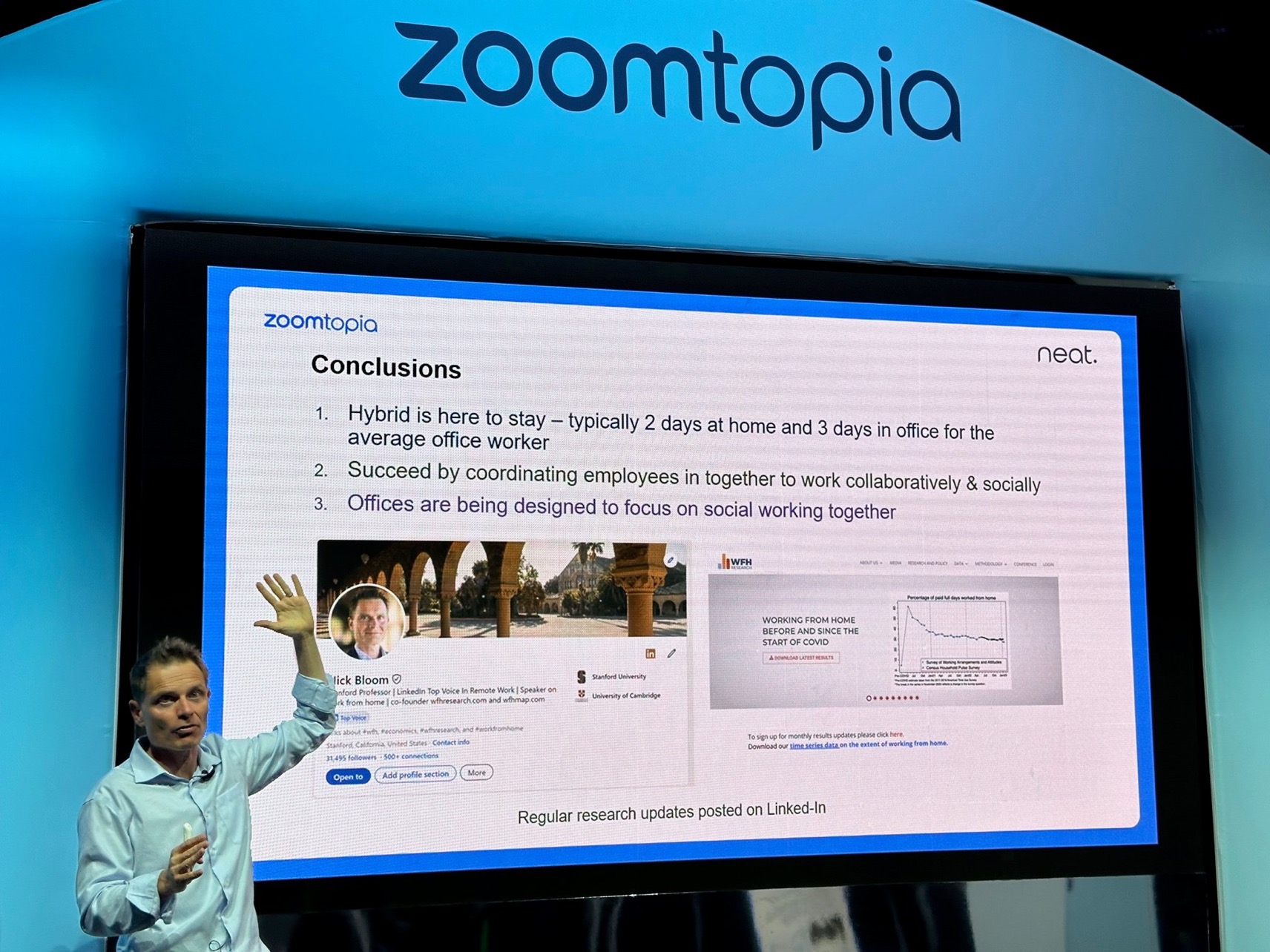
“The Unbiased TRUTH about Hybrid Work” from Nick Bloom, co-founder of WFH Research was one of the most compelling panels at Zoomtopia 2023. Bloom offered solid statistics on how Work From Home (WFH) has become common for office workers post-pandemic. More critical for leaders, he provided concrete, actionable ideas for effective hybrid team management and establishing a solid hybrid culture.
The changes have been dramatic. Between 1965 and 2020, at most 7.2% of paid workdays were WFH, according to the American Heritage Time Use Study. For a brief period near the beginning of the pandemic, 61.5% of work days were from home. Today, 28% of paid workdays are full days worked at home.
Those pandemic and post-pandemic stats come from WFH Research’s monthly Survey of Working Arrangements and Attitudes. (You can download the latest edition directly from WFH Research.) Launched in May 2020 to track how Work From Home (WFH) was changing during and after the pandemic, it’s one of the few groups actively studying how WFH has impacted the office and changed the workplace.
WFH Research asks a regular series of questions. One of the most revealing is “What are the top three benefits of working on your employer’s business premises?” The top three responses are “socializing with co-workers” (62%), “face-to-face collaboration” (54.4%), and “clearer boundaries between work and personal time” (42.74%).
Bloom also told his Zoomtopia panel attendees that the “two drives of higher organized hybrid WFH productivity are (i) quiet for concentration or “deep” work, and (ii) time saved commuting.” When asked, “How did you use the commuting time you saved by working from home?” 40% said they spent that time “working more on my job.”
Bloom concluded that leaders need “strong output focused performance evaluation tools” and that new hires should have “an extra day in the office for mentoring.” But the three core ideas that leaders need to get the most out of Hybrid WFH are:
1) Coordinate the team to come in on the same 2 or 3 days each week.
2) Promote in-person meetings, events, coffee, training, lunches on those office days
3) Suggest cross-office Zoom meetings and reading, writing, data etc on home days
This will only apply to some workers: for example, CTI’s event and integration technicians do the bulk of their work in the field. WFH isn’t an option for them or any factory worker. However, WFH Research shows that hybrid work is here to stay, and the average office worker in the US works two days from home.
One of Bloom’s conclusions is that “Offices are being designed to focus on social working together.” What that looks like will depend on you and your architects. But trust that CTI can provide state-of-the-art remote collaboration tools and audio-visual solutions for hybrid teams in any room.
Talk to Us About Your Project
Too busy to chat right now?
Send us a message.





